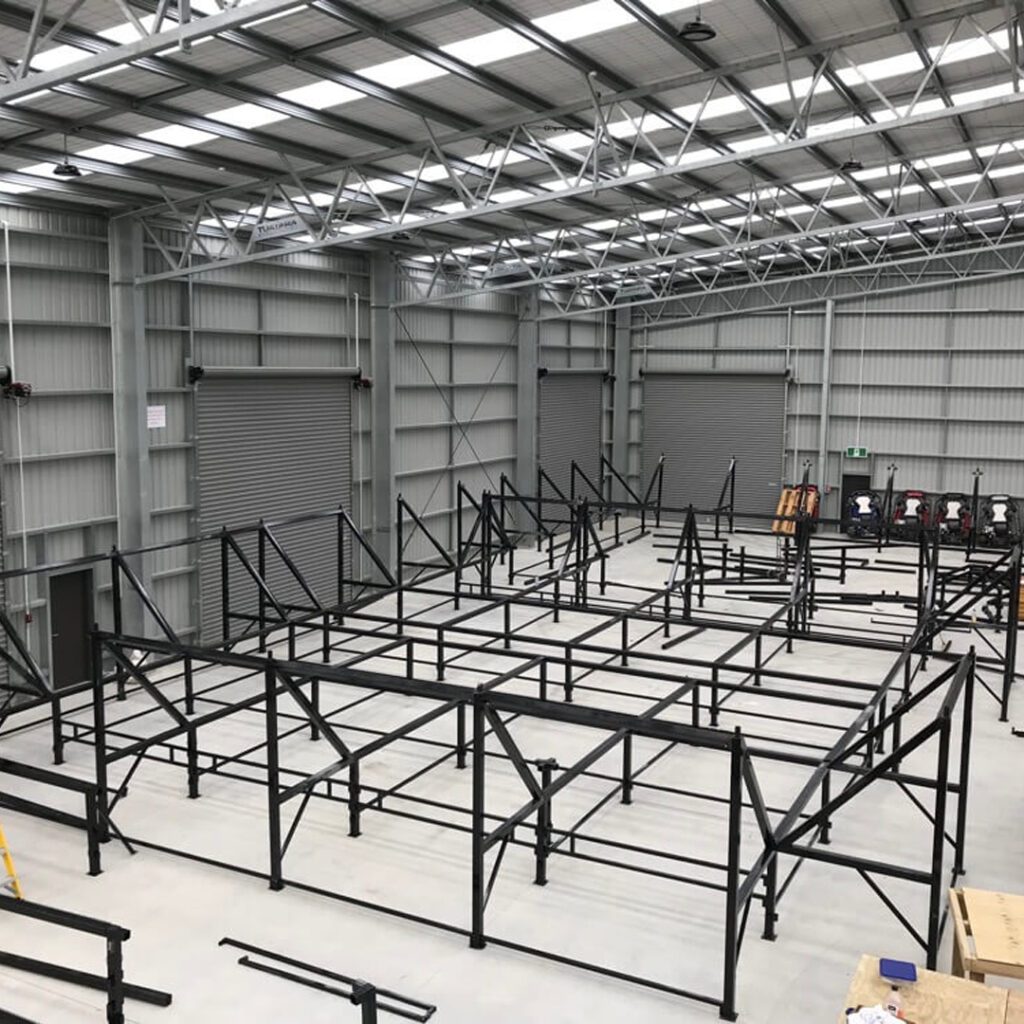
Trampolining has been around for decades and trampoline parks have been steadily gaining popularity since the early 2010s. While the trampoline industry has grown in recent years, many areas of the UK still lack a trampoline park. Do some research to find an underserved community that would welcome a new family entertainment option. Even in markets with existing parks, you can succeed by offering a unique experience or top-notch customer service.
You don’t need millions to launch a trampoline park. While the equipment and facility costs aren’t cheap, many entrepreneurs start with a small number of trampolines and build up from there as revenue comes in.
In this blog, we will discuss about 5 Myths around starting a trampoline park business in the UK.
Myth 1: Trampoline parks are overly complicated to set up

While setting up a trampoline park is no easy feat, with right planning it can absolutely be achieved. Focus on creating a comprehensive business plan, securing funding, finding the right location and equipment. These initial steps will set the foundation for your park.
Seek expert guidance
Work with consultants who specialise in trampoline park development. They can advise on layout, equipment selection and safety measures like safety enclosure nets to put you in a safe space. Their experience will help you avoid costly mistakes and ensure you’re compliant with all regulations from the start.
Patience and perseverance pay off
Once you’ve opened your doors, witnessing the joy your park brings to both children and adults alike will make all the effort worthwhile. Providing a hub for exercise, entertainment and community in a safe environment is deeply rewarding. While the process of establishing your park may have tested your patience, the end result will fill you with satisfaction and the motivation to make your business thrive.
Starting a trampoline park undoubtedly requires time, money and a certain level of complexity. However, with ample planning, expert support and a vision for what you want to achieve, navigating the challenges to build a successful park is absolutely possible. Staying focused on the reward of seeing your dream come to life will give you the perseverance needed to make it a reality.
Myth 2: Trampoline parks are high-risk investments

Trampoline parks certainly come with risks, the dangers are often overstated. With proper safety measures and waivers in place, trampoline parks are no more dangerous than many other recreational activities. As long as you take appropriate precautions like trampoline padding, using high-quality equipment, training staff, and enforcing strict rules to minimize reckless behavior, the risks can be managed effectively.
Strong demand means growth potential
The popularity of trampoline parks has skyrocketed in recent years, showing no signs of slowing down. People of all ages are drawn to the opportunity to bounce, flip and play in a massive space filled with trampolines and foam pits. As an exciting new entertainment option, especially for families and youth groups, trampoline parks are poised for strong growth. The key is choosing a good location, maintaining high safety standards, and providing an exceptional experience to build a loyal customer base.
Revenue streams beyond entry fees
While entry fees make up a large portion of revenue, trampoline parks have additional opportunities to generate money. Many parks offer special jumping sessions, lock-ins, birthday parties, and private events which come at a premium. There is also potential for revenue from food and drink sales, merchandise, sponsorship, and more. With the right business model exploiting all possible revenue streams, trampoline parks can be hugely profitable.
The notion that trampoline parks are inherently risky investments is misguided. Like any business, there are risks to manage, but the rewards of this fast-growing industry are huge. Trampoline parks that focus on safety, customer experience and diversified revenue have the potential for strong, long-term success. If you go in with realistic expectations, a smart growth plan, and a commitment to responsible management, a trampoline park can be an exciting and lucrative business venture.
Myth 3: Trampoline parks struggle to attract customers

Trampoline parks have become immensely popular among families with children, teenagers and young adults, as well as fitness enthusiasts of all ages.
Families with children
Trampoline parks are a magnet for families with children, especially on weekends and during school holidays. What child wouldn’t want to spend hours bouncing, playing dodgeball, and trying out ninja courses? They also help to curb social media toxicity by allowing children to spend more time with family and friends. Many parks offer family passes, birthday party packages, and special events to draw in the family crowd.
Teenagers and young adults
Trampoline parks have also become a popular hangout spot for teens and young adults. They offer a fun, active social environment where friends can flip, bounce, and show off their moves. Smart park owners engage this demographic by hosting teen nights, offering student discounts, and promoting heavily on social media platforms like Instagram and TikTok.
Fitness fans
Trampoline parks attract athletes, personal trainers, and anyone interested in a fun, high-intensity workout. Jumping on trampolines provides an effective cardio workout and works your core muscles. Many parks offer fitness classes and personal training on the trampolines.
With the right marketing and customer engagement strategies, trampoline parks can build a large, loyal customer base. Focusing on the key demographic groups, offering special events and discounts, and promoting your park on social media are all effective ways to attract more visitors and debunk the myth that trampoline parks struggle to find customers. A well-run trampoline park in a good location has the potential to be highly successful.
Myth 4: Trampoline parks require specific, limited locations

Trampoline parks were originally located mainly in industrial areas or large retail spaces, many successful parks today thrive in small towns and suburbia. As the industry has matured, entrepreneurs have found creative ways to bring the excitement of trampolining to communities of all sizes.
Adaptations for smaller spaces
If an enormous warehouse isn’t available or affordable in your area, consider a scaled-down park with fewer trampolines that still delivers an action-packed experience. Some parks have had success converting empty retail spaces, churches, and schools into trampoline parks. You can also look at temporary or pop-up locations to test the market before committing to a long-term lease.
Partnerships and sponsorships
Teaming up with schools, youth organizations, and family entertainment venues is a clever way to establish your brand in a new area. Offering school field trips, youth group events, and birthday parties exposes families to your park and builds word-of-mouth momentum. Look for potential sponsors and advertisers with a presence in your target communities as well. Their support can help fund your launch and increase local visibility.
Take the park to the people
If finding any location is a challenge, consider a mobile trampoline park setup. Some parks tour with inflatable trampolines, bungee systems, and other equipment to bring the fun directly to their customers. They set up at fairs, festivals, school events, and private parties. A mobile park is a flexible, low-cost option to generate interest and revenue until a permanent location is secured.
While trampoline parks are still a relatively new concept, creative entrepreneurs are proving they can thrive almost anywhere with the right business model and community connections. With some out-of-the-box thinking, you can bring the excitement of trampolining to locations and audiences overlooked by less adaptable competitors. The key is finding what works for your specific area and customer base.
Myth 5: Trampoline parks are only for children

It’s a common misconception that trampoline parks purely cater to children and families. While children and teens make up a large portion of visitors, trampoline parks attract thrill-seekers of all ages.
Adults love to bounce too!
Many adults rediscover the joy of trampolining and use it as an opportunity to tap into their inner child. Trampoline parks are also popular spots for date nights, social meetups and team building events. Some parks offer special ‘adults only’ sessions with music and drinks to create more of a party atmosphere.
Corporate and group bookings
Trampoline parks are ideal for corporate team building, networking and private group events. From dodgeball tournaments to fitness classes, trampoline parks can provide unique experiences for companies and organisations. Many parks offer group booking discounts, private jump areas and catering options to make hosting an event easy.
Opportunities for all abilities
While trampolining is a high-energy activity, many parks have areas and sessions suitable for people of all fitness levels. Some parks offer wheelchair accessible trampolines, walking trampolines for low-impact exercise and smaller trampolines for beginners. Special needs sessions are also available at certain times.
The opportunities at trampoline parks go far beyond just open jumping. With the growing popularity of trampoline fitness, dodgeball, ninja courses and other activities, there really is something for everyone at a modern trampoline park. So don’t believe the myth—people of all ages, abilities and interests can have a blast at a trampoline park!
Conclusion
While it’s not exactly a walk in the park (pun intended!), with the right research and planning, your business dreams can take flight. Sure, there are risks, but by going in prepared and with realistic expectations, you give yourself the best chance of success. And just imagine the buzz you’ll get seeing happy families leaping about whilst your tills ring with profits. If you have the drive and dedication, why not take the chance? Do your homework, make your plan, and who knows – you could be the next trampoline giant!
- Trampolines were invented in the 1930s by George Nissen and Larry Griswold.
- The word “trampoline” comes from the Spanish word “trampolín,” meaning diving board.
- Trampolining became an Olympic sport in the 2000 Sydney Games.
- The world’s largest trampoline is over 63 feet long and can accommodate multiple jumpers simultaneously.





